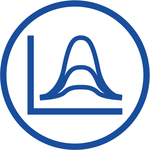Numerics

Physical and computational Acoustics
The numerical simulation of sound fields enhances the understanding of sound and noise propagation and supports for example the development of robust and efficient noise reduction methods. This is one of the reasons why we work on the development and application of computational methods to describe physical interactions between sounds and objects. Our research includes models of the dynamics of structures, sound fields, and vibrations with applications in environmental noise control, automotive audio, auditory perception, and speech production. Our research includes
- the development and application of efficient boundary element methods (BEM) for the Helmholtz equation to simulate the sound propagation of in 2D, 2.5D and 3D,
- the development of efficient methods for modeling systems with hysteretic behavior,
- modeling and (psychoacoustically) evaluating sound mitigation methods,
- the development of models and methods to simulate the human vocal tract.
Computers grow more powerful every year, however, the needs and the requirements of real life applications (e.g. the need for more detailed models, simulation of bigger objects with complex geometry, real-time applications, ...) grow even faster. Thus it is necessary to constantly develop new and robust methods and to introduce new ideas and concepts into the field of numerical and applied mathematics. By working in close cooperations with all other groups of the institute, the group is able to combine new mathematical concepts and developments (e.g. advances in Frame and wavelet theory) with their immediate application for real life problems (e.g. calculation of head related transfer functions for 3D virtual audio, evaluation of noise reduction measurements, ...).
Lighthouse Topic
Detection and Simulation of Noise and its Propagation for Developing Efficient Countermeasures
Noise, i.e. unwanted sound, is a phenomenon that effects our every day lives, and apart from being annoying can result in health problems. Motivated by this reason the topic of noise and noise reduction is one of the lighthouse research topic at the ARI. Together with partners from science and industry the researchers at the ARI investigated and investigate the origin and propagation of noise as well as methods for noise mitigation in multiple projects (PAAB, Wiabahn, PASS, LARS, RELSKG, SysBahnLärm, ...).
This includes
- Measurement and Simulation of Noise Sources,
- Simulation of Noise Propagation,
- Perception of Noise.
In connection with the international noise awareness day the ARI offers the interested public the opportunity to visit the institute and to experience the topics Acoustics' and "Noise"' with several interactive presentations and experiments.
Further links in connection with noise:
- www.laerminfo.at
- AUVA, Soziale Unfallversicherung
- Bericht der Europäischen Umweltagentur: Noise in Europe 2014
- Bericht der Kommission an das europäische Parlament und den Rat über die Durchführung der Richtlinie über Umgebungslärm gemäß Artikel 11 der Richtlinie 2002/49/EG
- WHO: Night Noise Guidelines for Europe
- Bericht der WHO zum Thema: Burden of disease from environmental noise